Table of content
Introduction: The Culinary Charm of Duck Legs
Duck legs, often overshadowed by their more popular counterparts such as duck breasts, hold a unique culinary appeal that deserves recognition. Rich in flavor, succulent, and versatile, duck legs can be transformed into a myriad of dishes that cater to diverse palates. Whether you’re a seasoned chef or an enthusiastic home cook, mastering the art of preparing duck legs can elevate your culinary repertoire to new heights. This comprehensive guide aims to demystify the process and provide you with a treasure trove of recipes, techniques, and tips to ensure your duck legs are nothing short of mouthwatering.
Understanding Duck Legs: A Culinary Primer
Before diving into the recipes, it’s crucial to understand the basics of duck legs. Duck legs are darker meat, which means they are richer in fat and flavor compared to white meat like duck breasts. This fat content is both a blessing and a challenge. On one hand, it adds depth and moisture to the dish; on the other, improper handling can result in greasy, unappealing results.
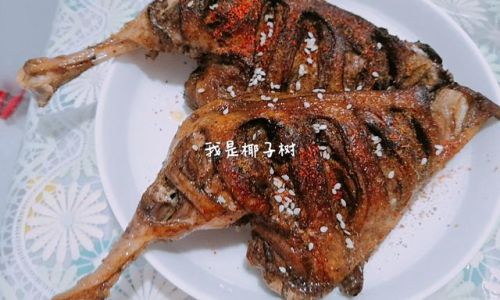
Types of Duck Legs:
- Fresh Duck Legs: These are the most common and are ideal for a variety of cooking methods.
- Confit Duck Legs: These are duck legs that have been slowly cooked in their own fat, often used as a base for other dishes.
- Smoked Duck Legs: These have a unique, smoky flavor profile and can be used in salads, soups, or as a standalone snack.
Selecting Quality Duck Legs:
- Look for legs that are firm to the touch, with a good layer of fat covering the meat.
- Avoid legs that have a strong odor or appear discolored.
- Freshness is key; try to source your duck legs from a reputable butcher or supplier.
Basic Preparation Techniques
-
Trimming the Fat:
While the fat adds flavor, too much can make your dish greasy. Trim excess fat, leaving just enough to keep the meat moist during cooking. -
Scoring the Skin:
Making small, diagonal cuts in the skin helps render the fat more evenly and creates a crispy exterior. -
Seasoning:
Season your duck legs generously with salt and pepper. For added depth, consider using a blend of herbs and spices such as thyme, rosemary, garlic, and paprika.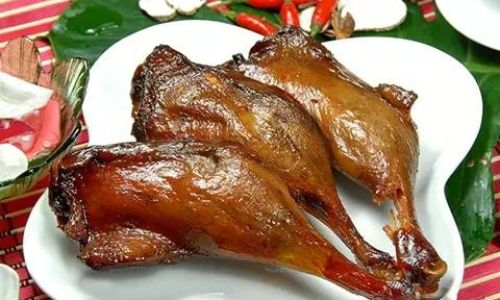
-
Marinating (Optional):
Marinating duck legs in a mixture of acid (like vinegar or lemon juice), oil, and aromatics can deepen their flavor. Let them sit for at least a few hours, preferably overnight.
Cooking Methods: Unlocking the Potential of Duck Legs
Duck legs are incredibly versatile and can be cooked in various ways, each yielding a distinct texture and flavor. Here are some popular methods:
-
Roasting:
Roasting duck legs is a straightforward and rewarding method. Preheat your oven to around 375°F (190°C). Place seasoned duck legs on a wire rack set over a roasting tray to catch the rendered fat. Roast for about 1 hour and 15 minutes, or until the skin is crispy and the meat is cooked through. Basting occasionally with the collected fat can enhance the flavor. -
Confiting:
Confiting duck legs involves slow-cooking them in their own fat until they are tender and flavorful. Start by trimming the excess fat but leaving enough to cover the bottom of a heavy-bottomed pot. Cook the duck legs over medium-low heat until the fat is rendered and the skin is golden brown. Add chopped vegetables (like carrots, onions, and garlic) and cook until softened. Pour in enough duck or chicken stock to cover half the legs. Cover and simmer gently for about 3-4 hours, or until the meat is very tender. Strain and cool the legs in the fat, which can be used for future cooking. -
Braising:
Braising duck legs in a flavorful liquid results in tender, juicy meat with a rich sauce. Season the legs and sear them in a hot oven or on the stovetop until browned. Transfer to a heavy-bottomed pot and add aromatic vegetables, tomatoes, wine, and stock. Bring to a simmer, cover, and cook in the oven at 325°F (165°C) for about 2-3 hours, or until tender.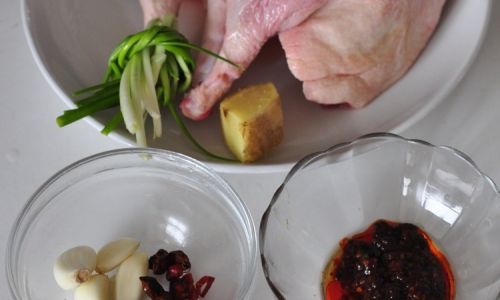
-
Grilling:
Grilling duck legs offers a smoky, caramelized exterior. Preheat your grill to medium-high heat. Season the legs and place them skin-side down on the grill. Cook for about 5-7 minutes per side, or until the skin is crispy and the internal temperature reaches 165°F (75°C). -
Slow Cooking:
Slow cookers are perfect for achieving tender, fall-off-the-bone duck legs with minimal effort. Season the legs and brown them lightly in a skillet. Transfer to the slow cooker, add vegetables, broth, and seasonings, and cook on low for about 6-8 hours.
Signature Recipes: Elevating Duck Leg Dishes
Now, let’s dive into some signature recipes that showcase the versatility and deliciousness of duck legs.
Recipe 1: Roasted Duck Legs with Honey-Mustard Glaze
Ingredients:
- 4 duck legs
- Salt and freshly ground black pepper
- 2 cloves garlic, minced
- 1 sprig fresh rosemary, finely chopped
- 2 tablespoons olive oil
- 3 tablespoons honey
- 2 tablespoons Dijon mustard
- 1 lemon, juiced
Instructions:
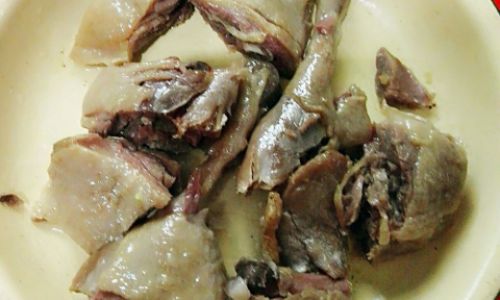
- Preheat your oven to 375°F (190°C).
- Trim excess fat from the duck legs and score the skin.
- In a small bowl, mix together garlic, rosemary, olive oil, salt, and pepper. Rub this mixture all over the duck legs.
- Place the duck legs skin-side down in a cold oven-safe skillet. Place the skillet on the stovetop over medium heat and cook until the skin is golden brown and most of the fat has rendered, about 10 minutes.
- Flip the duck legs and transfer the skillet to the preheated oven. Roast for about 45 minutes to 1 hour, or until the skin is crispy and the meat is cooked through.
- In a small bowl, whisk together honey, Dijon mustard, and lemon juice. Brush the glaze over the duck legs during the last 10 minutes of roasting.
- Remove from the oven and let rest for 10 minutes before serving.
Recipe 2: Duck Leg Confit with Root Vegetables
Ingredients:
- 4 duck legs
- Salt and freshly ground black pepper
- 2 tablespoons olive oil
- 1 large onion, chopped
- 2 carrots, peeled and chopped
- 2 celery stalks, chopped
- 4 cloves garlic, minced
- 2 sprigs fresh thyme
- 1 bay leaf
- 1 cup dry white wine
- 2 cups duck or chicken stock
- 1 pound assorted root vegetables (like potatoes, turnips, and rutabagas), peeled and cut into chunks
Instructions:
- Trim excess fat from the duck legs but leave enough to cover the bottom of a heavy-bottomed pot. Season the legs with salt and pepper.
- Heat olive oil in the pot over medium-high heat. Add the duck legs and cook until the skin is golden brown and the fat is rendered, about 10 minutes per side. Remove the legs from the pot and set aside.
- Add the onion, carrots, celery, and garlic to the pot. Cook until softened, about 5 minutes. Add thyme, bay leaf, wine, and stock. Bring to a simmer.
- Return the duck legs to the pot, ensuring they are partially submerged in the liquid. Cover and simmer gently for about 3-4 hours, or until the meat is very tender.
- Meanwhile, prepare the root vegetables. In a separate pot, cook them in boiling salted water until tender, about 15 minutes. Drain and set aside.
- Once the duck legs are done, remove them from the pot and let cool in the fat. Strain the cooking liquid and discard the solids.
- To serve, reheat the duck legs in the strained fat until warm. Serve with the cooked root vegetables on the side.
Recipe 3: Braised Duck Legs with Red Wine and Prunes
Ingredients:
- 4 duck legs
- Salt and freshly ground black pepper
- 2 tablespoons olive oil
- 1 large onion, sliced
- 2 carrots, peeled and sliced
- 2 cloves garlic, minced
- 1 cup dry red wine
- 1 cup duck or chicken stock
- 1 cup pitted prunes
- 2 sprigs fresh rosemary
- 2 bay leaves
- 1 tablespoon tomato paste
Instructions:
- Preheat your oven to 325°F (165°C).
- Season the duck legs with salt and pepper.


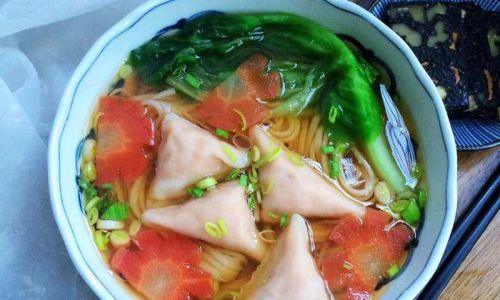

0 comments